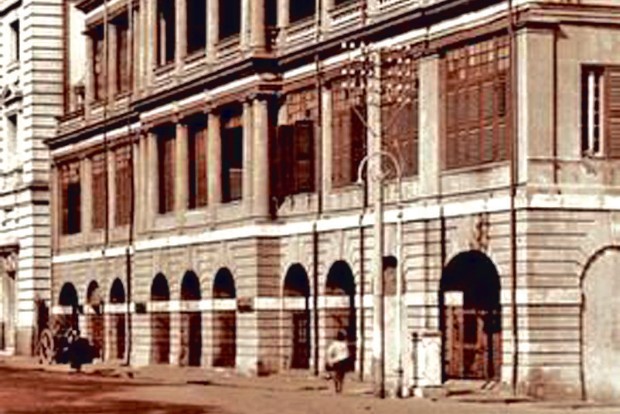Begin typing your search...
A bank for the Indians — An idea that took birth with the crash of Arbuthnots
In this series, we take a trip down memory lane, back to the Madras of the 1900s, as we unravel tales and secrets of the city through its most iconic personalities and episodes

Chennai
IN the first decade of the 20th century, Madras encountered its utmost financial catastrophe. The sturdiest of its commercial institutions in which kings, common men, the Governor of Madras and even gods and temples (Tirupathi temple lost a princely sum of Rs 23,000) had consigned their money with — the Arbuthnots crashed. Its partner in London jumped before a train and its local head was arrested for fraud.
With thousands of depositors on the streets, there was a shift in the mindset of the local population. Obviously, the British-run financial firms were no longer foolproof. Many letters were written to the newspapers, saying local institutions would have understood the safety and sentiments of the investors. A missive from Dewan Bahadur R Raghunatha Rao, a distinguished Marathi gentleman from Tanjore district who also had served as the Diwan of Indore, suggested the starting of locally run banks. Indian enterprise was just picking up at the turn of the century including VOC’s famous shipping company in Tuticorin. There were quite a few banks too in this wave. The predecessors of the Bank of Thanjavur, Corporation Bank and the Canara Bank had already been established in the presidency.
And the lawyer Krishnaswamy Iyer, cross-examining the disgraced Arbuthnot, got an idea from it probably. He felt Indians could do a better job than the Arbuthnots. Krishnaswamy was an institution founder all his life; ranging from Madras Sanskrit College to the Mylapore Club, all were watered by his enthusiasm. However, there were instances where his patriotism would be questioned. Bharati would later question his elevation in court and Iyer had a blow-hot-blow-cold relationship with the poet. Though he would patch up factions of the Congress and even host delegates at his house, the lawyer would even sponsor a longish poem on King George for the Delhi coronation.
Within 20 days of the Arbuthnot crash, Krishnaswamy had sent out a letter to prominent citizens inviting them to his house to discuss this new desi banking project. There was a debate on whether capital was to be raised for a new bank or a new branch of some already existing Indian-run bank in Madras. Krishnaswamy Iyer and his friends were mainly lawyers (three of the initial signatories would become the earliest of Indian judges) and they knew they lacked the business acumen to run a banking institution. They turned to the mercantile community of the Nagarathars (Chettiars) many of whom they represented in the courts. With historic origins in Chola port of Poompuhar, the community had later emerged as salt merchants. Having made their fortune they had followed the British to the new lands conquered and financed the economic growth of Burma, Malaya and Ceylon. Chettiars took an interest in the concept of an ‘Indian bank’ and their support allowed the dream to sustain. But it wasn’t a smooth flow. The authorised capital was Rs 20 lakh in the form of Rs 10 shares. It was a struggle to place it fully and took all of two years before investors were found.
The Indian Bank opened its business on August 15, 1907. Appreciating the native effort, Governor Lord Pentland visited the bank premises in 1913. The initial registered office was in Luz, Mylapore and Indian Bank moved into Parrys building and Ramakoti Building in Black Town before it bought up Arbuthnot’s office for Rs 1,35,000 when assets of Arbuthnot were liquidated. Arbuthnots had set up shop as a neighbour to Bentinck’s Building using their influence to name the street between the two as Arbuthnot Lane (the name still exists). The conservative bank continued in the same building parallel to the port till almost nationalisation in 1969 when they knocked it down and built a multi-storey concrete and glass structure. Krishnaswamy Iyer’s contributions were remembered with a marble bust, the first addition to the erstwhile Arbuthnot building in 1916 unveiled by Sir Harold Stuart.
World War 1 was harsh on the banking system. Prices doubled as did the cost of living. Heavy withdrawals played havoc. A record 101 banks downed shutters in India during wartime. However, it was remarkable that the Indian Bank, around whose premises German shells of the SMS Emden actually fell, survived. Caution and conservatism of the management were largely responsible. The management had decided growth was not the real show of strength but networking and building of a reputation were. A Triplicane sub-office and branches in Madurai and Kakinada were the only expansions in the first decade. However, the bank failed to anticipate World War 2 and went into a great expansion in the far east. By sheer coincidence, wherever the Indian Bank went, the Japanese followed or bombed.
Rajah Sir Annamalai Chettiar’s family was involved in the bank from the start to nationalisation. His son Muthiah was its last managing director when Indian Bank, along with 13 other banks, with deposit liabilities of more than Rs 50 crore, was nationalised by the Indira Gandhi government in 1969. It was challenged in court and after hearing it for a record 34 days, the court declared it void. But the government did not relent and passed a new bill in Parliament with retrospective effect and got the President’s assent.
— The author is a historian
Reference: A Swadeshi Bank from South India by RK Seshadri
Visit news.dtnext.in to explore our interactive epaper!
Download the DT Next app for more exciting features!
Click here for iOS
Click here for Android
Next Story



